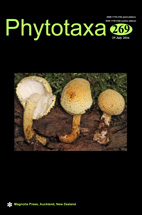Abstract
The taxonomically intricate Edraianthus dalmaticus-serbicus group within E. tenuifolius-complex in the Balkan Peninsula is reviewed using morphological, molecular and genome size data based on extensive sampling of populations across the species’ range. The phylogenetic analyses based on Amplified Fragment Length Polymorphisms (AFLPs), plastid DNA (trnL-F region and rbcL-atpB spacer) and nuclear ribosomal external transcribed spacer (nrETS) sequences confirmed the monophyly of E. serbicus as traditionally defined but have also revealed the presence of two distinct and allopatrically distributed taxa. The genome size and morphological analyses, performed on the same widespread sample of populations, largely corresponded with molecular results, allowing us to raise the overlooked taxon E. serbicus subsp. stankovici, to the species level. The names Edraianthus serbicus and E. serbicus subsp. stankovicii (≡ E. stankovicii) are typified. Furthermore, a new differential diagnosis, description and illustration of E. stankovicii are provided, as well as its conservation status is assessed. Edraianthus stankovicii is a rare and critically endangered stenoendemic taxon, with the distribution limited only to Mts. Veliki Krš and Stol in NE Serbia.

